From automotive giants to fine jewelry manufacturers, the allure of industrial laser cutters lies in their ability to revolutionize the manufacturing landscape, offering speed, precision and limitless creative possibilities.
The allure of industrial laser cutting machines goes beyond their technical prowess. It lies in their ability to bridge the gap between precision and art, seamlessly blending the science of light with human creativity. Imagine a beam of light, focusing with precision, carving intricate details into a sheet of metal, etching delicate patterns into fabric, or shaping the intricate curves of a custom jewelry design.
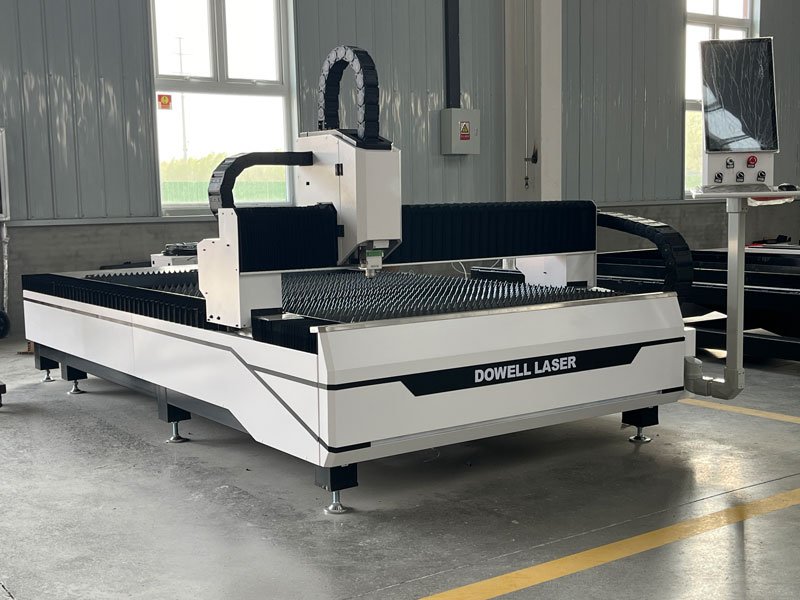
How industrial cnc laser cutting machine work
The commercial laser cutting machine tool is a marvel of modern technological development, harnessing the power of laser to cut materials with unparalleled precision. At their core is a laser beam, produced by exciting a medium such as carbon dioxide or Nd: YAG with electricity or light. This stimulates the atoms, causing them to emit photons arranged into coherent beams.
Guided by mirrors and lenses, the laser beam melts or vaporizes material along a predetermined path, creating a clean, precise cut. Its concentrated nature allows for complex designs and intricate shapes.
The industrial metal laser cutting machine решение operates in multiple modes. Continuous wave lasers emit a constant beam and are ideal for thicker materials. Pulsed lasers, which emit short pulses, are ideal for engraving or etching delicate surfaces.
Types of Industrial Laser Cutting Processes
Several types of industrial laser cutting processes cater to different manufacturing needs:
Laser Vaporization Cutting: Imagine a laser beam, focused with pinpoint accuracy, heating a material’s surface until it vaporizes. A gentle gas jet whisks away the vaporized material, leaving behind a clean, precise cut.
Laser Melting Cutting: This method utilizes high-powered lasers to melt the material along the desired cutting path. A gas jet then blows away the molten material, creating a precise cut with minimal heat-affected zone.
Laser Flame Cutting: For thicker materials like steel, industrial laser cutters can team up with a flame. The laser preheats the material, allowing the flame to effortlessly melt and remove the molten material, resulting in a clean and efficient cut.
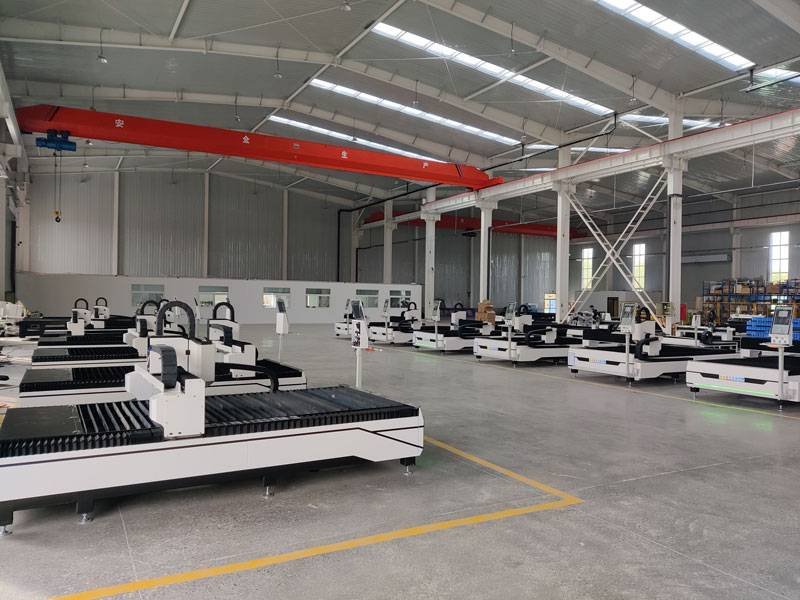
Advantages of industrial fiber laser cutting machine
- Высокая Точность: industrial fiber laser cutter provide exceptional precision, allowing complex cuts to be made within tight tolerances. The focused laser beam delivers precise cuts with minimal heat-affected zone, resulting in clean, smooth edges and minimal material waste.
- Универсальность: Laser processing system can cut a wide range of materials, including metals such as steel, aluminum, stainless steel, copper and brass, and are suitable for cutting materials of various thicknesses, from thin foils to thick plates, making them versatile Multifunctional tool for industrial applications.
- High speed: Fiber metal laser cutting machines are known for their high cutting speeds, enabling them to process materials quickly and increase productivity. Advanced laser technology and motion control systems allow for rapid acceleration and deceleration, reducing cycle times and increasing throughput.
- Низкие эксплуатационные расходы: Fiber laser cutting machines require minimal maintenance compared to other cutting methods. They have fewer moving parts and components, resulting in less downtime and lower maintenance costs. Additionally, fiber lasers offer longer life and greater reliability, ensuring consistent performance over time.
- Energy efficiency: Fiber laser cutting machines are highly energy efficient, consuming less power than other cutting technologies. Using fiber optic cables to deliver laser beams minimizes energy loss and heat generation, thereby lowering operating costs and reducing environmental impact.
- Cost Effectiveness: While the initial investment in a fiber laser cutting machine may be higher than other cutting methods, the long-term cost savings are significant. The high precision, speed and efficiency of fiber lasers result in lower production costs, higher throughput and faster return on investment.
- Minimal Material Deformation: Fiber laser cutting produces minimal thermal deformation in the workpiece, maintaining the material’s structural integrity and dimensional accuracy. This is especially important for applications that require tight tolerances and precise geometries.
- Совместимость с автоматизацией: Fiber laser cutting machines are compatible with automation systems, allowing seamless integration into automated manufacturing processes. Automating material handling, loading/unloading and parts sorting can further increase productivity and efficiency.
Materials Suitable for industrial CNC laser cutter
Industrial laser cutters are compatible with an extensive array of materials. Some commonly used materials include:
| Материалы | Описание | Common Applications |
|---|---|---|
| Металлы | Steel: Including mild steel, stainless steel, and alloy steel. Aluminum: Lightweight, corrosion-resistant. Copper: Excellent electrical conductivity. Brass: Durable, corrosion-resistant alloy of copper and zinc. | Structural components, machinery parts, aerospace, automotive. |
| Alloys | Titanium: High strength-to-weight ratio, corrosion-resistant. Inconel: Nickel-chromium superalloy, high temperature and corrosion resistance. | Aerospace, medical implants, chemical processing. |
| Plastics | Acrylic (PMMA): Transparent, weather-resistant. Polycarbonate (PC): Impact-resistant, transparent. PVC: Chemical-resistant. ABS: Tough, impact-resistant. | Signage, automotive glazing, piping, consumer electronics. |
| Wood and Composites | Plywood: Engineered wood product. MDF: Wood fibers and resin. Particleboard: Wood particles and resin. Composite Materials: Carbon fiber, fiberglass, laminates. | Furniture, cabinetry, construction, aerospace. |
| Fabrics and Textiles | Leather: Fashion accessories, upholstery. Synthetic Fabrics: Polyester, nylon, polypropylene. | Apparel, footwear, upholstery, technical textiles. |
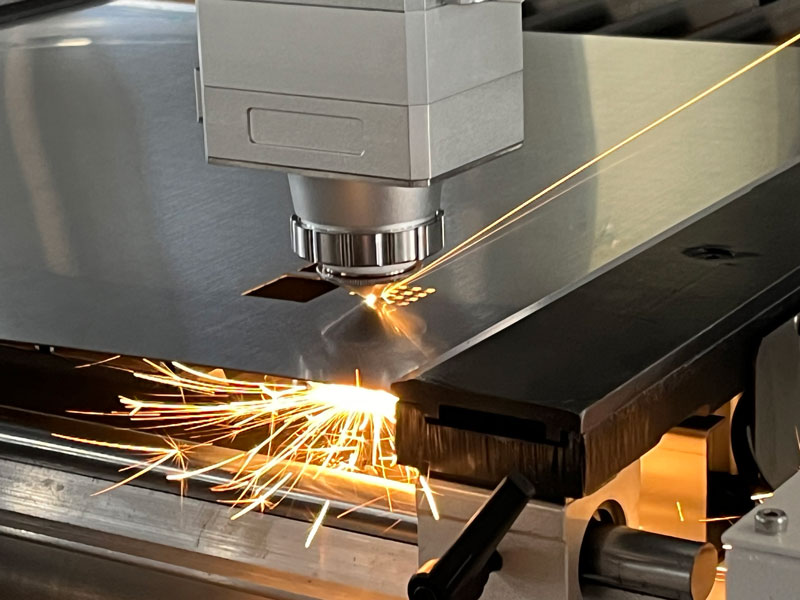
Applications of Industrial Laser Cutters Across Industries
Industrial laser cutters have transcended the boundaries of specific industries, becoming a versatile tool that empowers innovation across a wide range of sectors. Let’s explore some of the key applications:
Металлические Изготовление: From intricate automotive components to massive construction beams, laser cutters precisely shape metal sheets, tubes, and profiles, ensuring high-quality and efficient production.
Электроника Производство: The delicate circuits and components of electronic devices demand precision. Laser cutters excel in creating these intricate parts with unmatched accuracy, ensuring the flawless functioning of modern electronics.
Аэрокосмический: The aerospace industry relies on lightweight yet robust materials. Laser cutters play a crucial role in shaping these materials for aircraft and spacecraft components, contributing to fuel efficiency and enhanced performance.
Medical Device Manufacturing: The intricate nature of medical implants and devices requires meticulous precision. Laser cutters deliver this precision, creating complex shapes and features with minimal heat-affected zones, ensuring the integrity and functionality of these life-saving devices.
Автомобильная промышленность: From car interiors to engine components, laser cutters contribute to the automotive industry by shaping a wide range of materials with precision and speed, contributing to the sleek design and efficient performance of modern vehicles.
Signage and Display: Eye-catching signage and displays demand intricate details and precise cuts. Laser cutters excel in creating these elements, ensuring vibrant and impactful visual communication.
Textile and Apparel: From delicate lace patterns to intricate garment designs, laser cutters bring precision and creativity to the textile and apparel industry, enabling the creation of unique and stylish clothing and accessories.
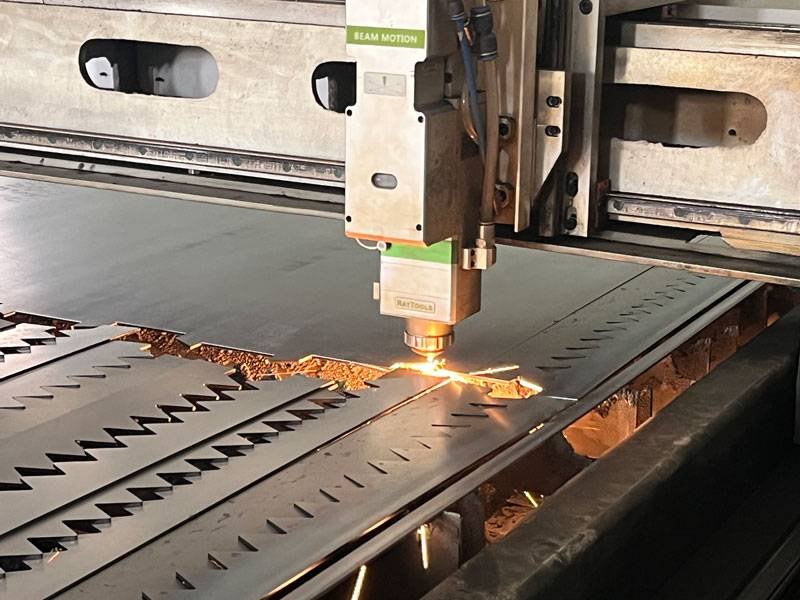
How To Choose An Affordable Laser Cutting Machine
Determine the material to cut:
Determine the types of materials that are frequently cut. Different steel laser cutting machines are optimized for specific materials and thicknesses. For example, CO2 lasers are good at cutting non-metallic materials like wood, acrylic, and leather, while fiber lasers are better suited for cutting metals like stainless steel and aluminum because of their ability to handle reflective materials.
Device power and dimensions:
The power of a industrial laser cutting machine determines its cutting speed and the thickness of materials it can handle. Higher power lasers can effectively cut thicker materials. For example, high-power fiber lasers can cut 1-inch-thick steel with powers ranging from 1kW to over 2kW. Also, make sure that the size of your laser cutter matches the largest dimensions of the material you plan to cut, as industrial laser cutters can vary in size, with some capable of handling large sheets up to 3000 x 12000 mm.
Стоимость:
Industrial metal laser cutting machines are a significant investment, with prices ranging from around $15,000 for a small CO2 laser to over $1 million for a high-power fiber laser. The cost will depend on factors such as the power of the laser, its size, and additional features such as automation capabilities. A balance must be found between budget and machine capabilities to ensure it meets your production needs without overspending.
Additional features and automation:
Look for a fiber laser cutter with automated features that can increase productivity and reduce labor costs. Features such as automatic loading and unloading systems and advanced CNC controls can significantly improve operational efficiency, especially in high-volume production environments.
Consider maintenance and operating costs:
Consider the ongoing maintenance and operating costs associated with owning an industrial laser cutter system. These costs may include electricity, replacement parts such as lenses and nozzles, and routine maintenance tasks to maintain optimal performance. For example, high-power fiber lasers require regular maintenance to ensure efficient operation.
Consult vendors and experts:
Before purchasing, seek advice from suppliers and industry experts. They can provide valuable insight into the most suitable cnc laser cut machine model based on your specific requirements. Suppliers often offer demonstrations so you can see the machine in action and evaluate its compatibility with your production needs.
Evaluate new vs. used machines:
Decide whether to invest in a new or used laser cutting machine. While new machines are equipped with the latest technology and often include a warranty, they are more expensive. Used machines can be a cost-effective option, but may require increased maintenance and lack a manufacturer’s warranty.
By carefully considering these factors, you can choose an industrial laser cutter that not only fits your budget but also enhances your manufacturing capabilities, thereby increasing productivity and profitability.
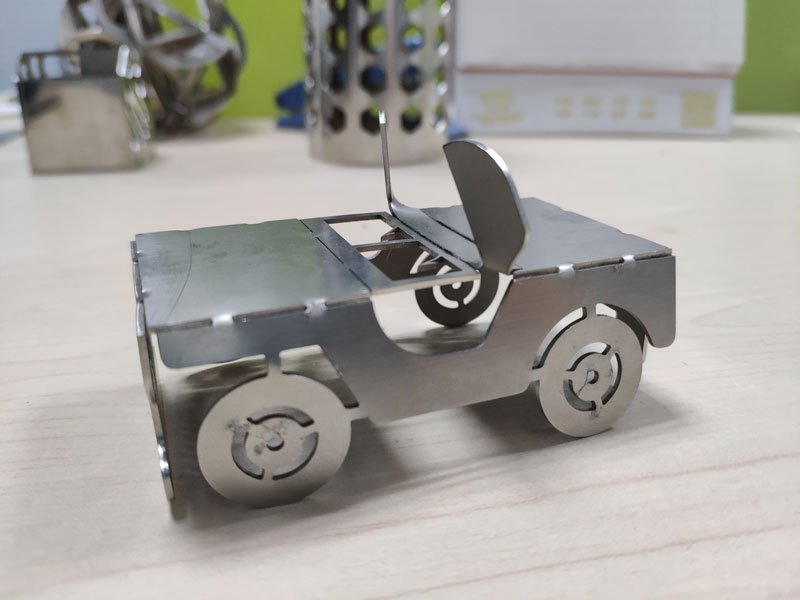
Maintenance and Safety Tips for Industrial Laser Cutting machine
Safe maintenance and operation of industrial laser cutting machines is critical to the operation of the equipment. Here are some tips to keep your machines in tip-top shape and ensure a safe work environment:
Follow Manufacturer’s Guidelines: Familiarize yourself with the manufacturer’s instructions for your specific laser cutter model. These guides cover maintenance procedures, safety precautions and how to use the machine effectively.
Keep it Clean: Regularly remove dust, debris, and residue from the cutting area, lenses, mirrors and other components. Use recommended cleaning solutions and tools to maintain performance and prevent potential problems.
Check consumables: Pay close attention to consumables such as lenses, nozzles, and filters. Replace them as needed to maintain cut quality and safety.
Stay Lubricated: Make sure your machine’s moving parts are lubricated according to the manufacturer’s instructions. This helps reduce friction and ensures smooth operation.
Check Optics: Periodically inspect laser optics for damage, dirt, or misalignment. Clean or replace them as needed to maintain optimal cutting performance and beam quality.
Electrical Safety: Make sure the machine is properly grounded and all electrical connections are secure. Regularly inspect cables, wires, and connectors for wear or damage.
Wear personal protective equipment: Always wear appropriate personal protective equipment such as safety glasses, gloves, and protective clothing when operating machinery.
Ventilation: Make sure your workspace is well ventilated to remove smoke and gases produced during the cutting process. Follow local ventilation requirements.
Train Operators: Provide comprehensive training to all operators on safe operating and maintenance procedures and emergency protocols.
Emergency Preparedness: Keep fire extinguishers nearby and make sure operators know how to use them. Develop a contingency plan for accidents, injuries, or machine failures.
Routine Inspections: Schedule routine inspections by qualified technicians to identify any potential problems early and keep your machine running smoothly.
Record Keeping: Keep complete records of all maintenance activities, including cleaning, inspections and repairs, to track the machine’s history and ensure warranty compliance.
By following these tips, you can keep your industrial laser cutter in good condition and create a safer work environment for everyone involved.
How Much Does A Laser Cutter Cost?
The cost of an industrial laser cutter can vary significantly depending on various factors such as power output, bed size, brand reputation, and additional features. Entry-level machines can start from a few thousand dollars, while high-end models can cost several hundred thousand dollars.

How To Use A Laser Cutter Machine for Beginners?
For many beginners of laser cutting equipment, how to choose the right equipment and how to use the equipment is a key issue. Here are some methods that I hope will help you.
Get laser cutting machine information:
Look online for makerspaces or community workshops that have laser cutters available for public use.
Or some libraries and universities may offer laser cutting classes or opening hours.
Select materials:
Different materials require different settings for your laser cutting machine. Common materials for beginners include wood, acrylic, and cardboard.
Be sure to check the manual or online resources to see
Design your project:
You need to create digital files in a vector format (.DXF, .SVG) that the laser cutter can understand.
There are many free design software options available, or you can find pre-made designs online.
Your design should include lines for cutting and possible filled areas for engraving.
Prepare machines and materials:
Once you have your design ready, you need to
The software allows you to set power, speed and other parameters for cutting and engraving.
Place the material on the laser cutting bed and secure it according to the machine’s instructions.
Cutting and engraving:
Before starting the laser, double check all settings. It’s a good idea to start by making a test cut from a piece of scrap material.
Once you are confident that everything is set up correctly, you can begin the cutting or engraving process.
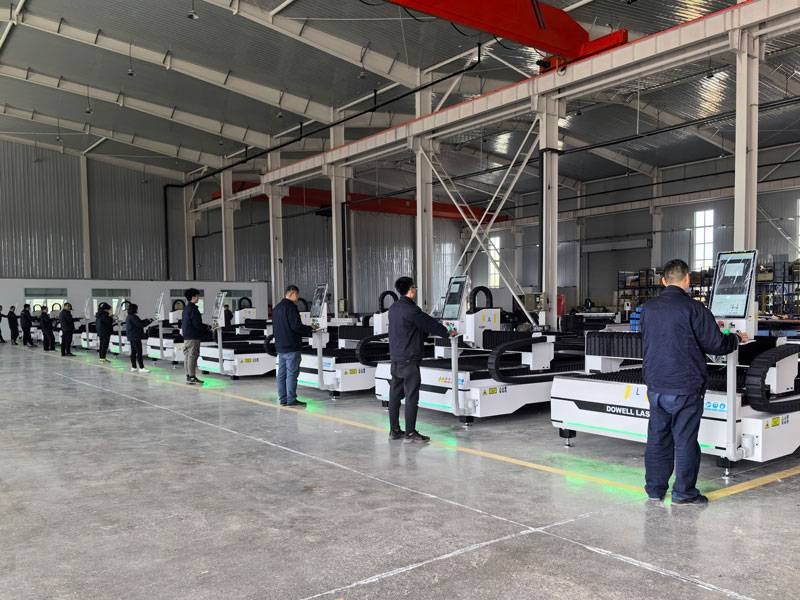
What is the power of a laser cutting machine?
The power of a laser cutting machine is typically measured in watts (W). Industrial laser cutters can range from low-power machines starting at around 100W to high-power machines exceeding several kilowatts (kW). The required power depends on the type and thickness of materials being cut.
